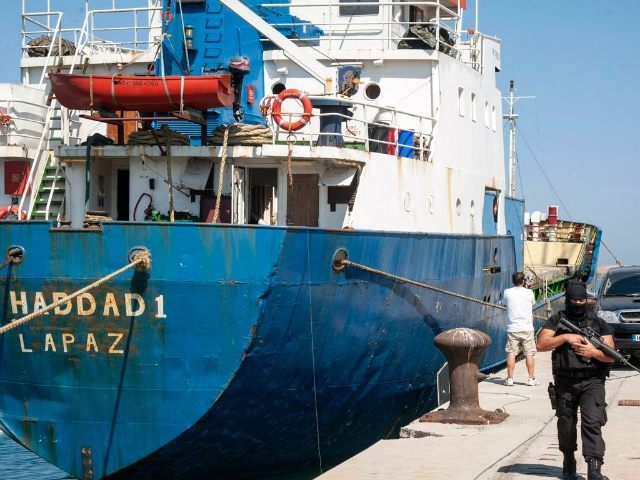On September 1, a special unit of the Greek coast guard intercepted an old Bolivian-flagged freighter called Haddad 1 off the coast of Crete. The ship, bound from Turkey for the Libyan port of Misrata, proved to be carrying nearly 5,000 urban combat shotguns of Turkish manufacture and 500,000 rounds of 9mm ammunition.
The weapons were hidden inside boxes of office equipment. Misrata is currently under the control of an Islamist militia loyal to the “Libya Dawn” gang currently controlled in Tripoli, which is not the internationally-recognized legitimate government of Libya. The entire nation of Libya is under a United Nations arms embargo.
There has been surprisingly little follow-up coverage on this story over the past few weeks, considering the number of unanswered questions and suspicious details. The last round of reports from the weekend after the intercept indicated that the seven-man crew of the Haddad 1—including a Syrian captain, three other Syrian crew, two Indians, and an Egyptian—had been arrested and were expected to submit depositions. “The authorities are also inspecting the mobile phones of the seven crew members, in an effort to determine the final destination or recipient of the illicit cargo,” the Greek website To Byma wrote on September 4.
For starters, it is interesting that the Greek coast guard used special forces to intercept the ship. What tipped them off and prompted the interdiction? The Haddad 1 has a dodgy history—in fact, according to International Business Times, it is currently banned from docking in European ports due to safety violations, and the Greek company that owns it has a history of recent detentions from European authorities. The Haddad 1 also turned out to be carrying a huge load of cigarettes that appeared to be contraband. Was general suspicion about the ship and its owners enough to prompt the raid, or did the Greek authorities have something more specific to go on?
According to a September 6 piece by the UK Independent, the Turkish government responded to the seizure by claiming the weapons were fully documented and were ultimately headed for the Sudanese police force—which would make their smuggler-style packaging inside boxes of office equipment a bit difficult to explain.
“If investigations by the Greek authorities show that the consignment is going to receivers other than those stated in the documentation, and if that is shared with us, naturally measures could be taken,” said a Turkish foreign ministry spokesman after the weapons were seized.
Such a detail should not have taken very long to clear up, but it has now been almost two weeks since the ship was intercepted, without any media coverage suggesting the Turks produced that documentation and cleared up the whole mess. The Greek government was very proud of itself for intercepting the Haddad 1, with Greek Marine Minister Christos Zois praising his forces by saying “their co-ordination, speed, high sense of professionalism and seriousness in the preparation and combination of information led to the identification of this ship and the large quantity of arms and ammunition.”
If the Turkish government produced appropriate documentation and proved the guns were being legally shipped to the Sudanese government, it would have been a slightly embarrassing finale to the story for everyone involved, including the shipping company and the governments of both Turkey and Greece. It is easy to understand why both governments might want to let the story fade away quietly in that case.
A possible explanation for the apparent conflict between the statements from Turkey and Greece was provided by the Turkish Hurriyet Daily News, which reports that the ship’s customs declaration form did list a very small quantity of ammunition and some “ungrooved rifles and straw nightstands exported to Lebanon.” That does not square very closely with what the Greek Coast Guard actually found hidden on board the ship.
If the weapons were not legally bound for the Sudanese police, then who were the intended recipients? The Libya Dawn militia that controls Misrata has lately been making noises about joining forces with rival militia groups to fight ISIS, which is pushing hard for Libyan territory. A major offensive with lots of vicious street battles would require weapons such as combat shotguns.
On the other hand, there was speculation in Greek media at the time of the Haddad 1 boarding that the guns were being smuggled past the rebels to ISIS, and fears that some of the weapons might find their way into the hands of ISIS operatives slipping into Europe with the vast migratory wave of “refugees” sailing across the Mediterranean from Libyan ports. (Misrata is the site of a large detention center for migrants recovered by the Libyan coast guard after failed attempts to cross the Mediterranean.) There doesn’t seem to be any concrete evidence for the theory that the guns were being smuggled to ISIS, however.

COMMENTS
Please let us know if you're having issues with commenting.